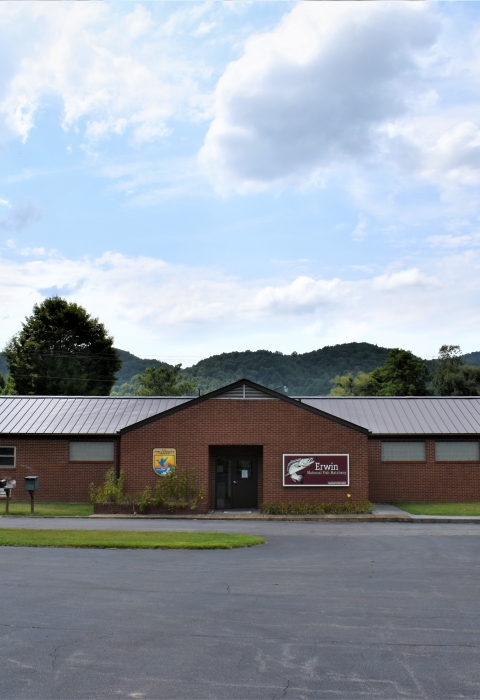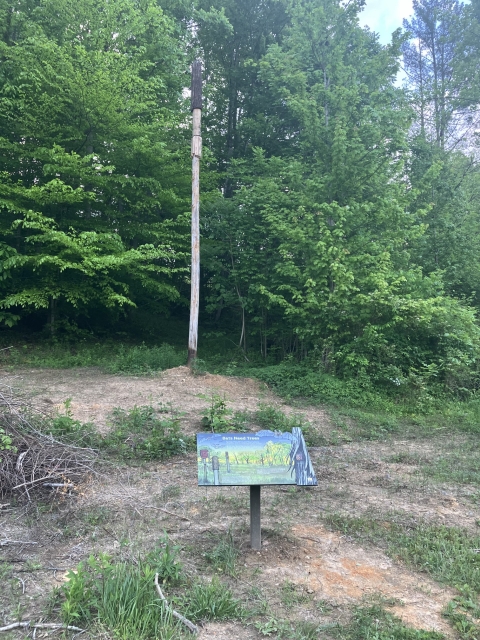Most people don't think about bats when they visit a fish hatchery. However, staff at Erwin National Fish Hatchery are working to change this by creating bat-focused outreach at the hatchery. This project has multiple components. Last year the hatchery partnered with at East Tennessee State University, specifically, Dr. Richard Carter and one of his graduate students, Seth Morelock to set up acoustic monitoring to identify bat species at the hatchery. Acoustic monitors can accurately identify bat species by recording their call frequencies, most of which are outside the range of what human ears can detect. Once the frequencies are recorded software is used to assign the most probable genus and species based on the frequency of the calls. We were all surprised by the number and diversity of bats recorded at the hatchery. Calls recorded at the hatchery were assigned to Big brown bat, eastern red bat, hoary bat, silver haired bat, gray bat*, little brown bat*, northern long eared bat*, Indiana bat*, evening bat, tri-colored bat, several of which are endangered species!
In addition to identifying what is using the hatchery, staff are working to improve bat habitat by creating artificial roosting structures for bats. These roosts are made by wrapping BradenBark around a log, and mounting the log to the top of an unused utility pole. These artificial roosts mimic the roosting conditions found in dead trees. The first of the artificial roosts has been placed beside the upper raceways, and can easily be seen by those walking along the paved path. This location was chosen to help inform hatchery visitors about bats, and has an informational sign from the Tennessee Ecological Services Field Office placed in front of it to inform visitors about the importance of trees as roosts for bats.
Erwin National Fish Hatchery has plans for more habitat enhancements and outreach events at the hatchery. More artificial roosts will be placed on hatchery property, and staff will continue to educate hatchery visitors about the importance of bats.




